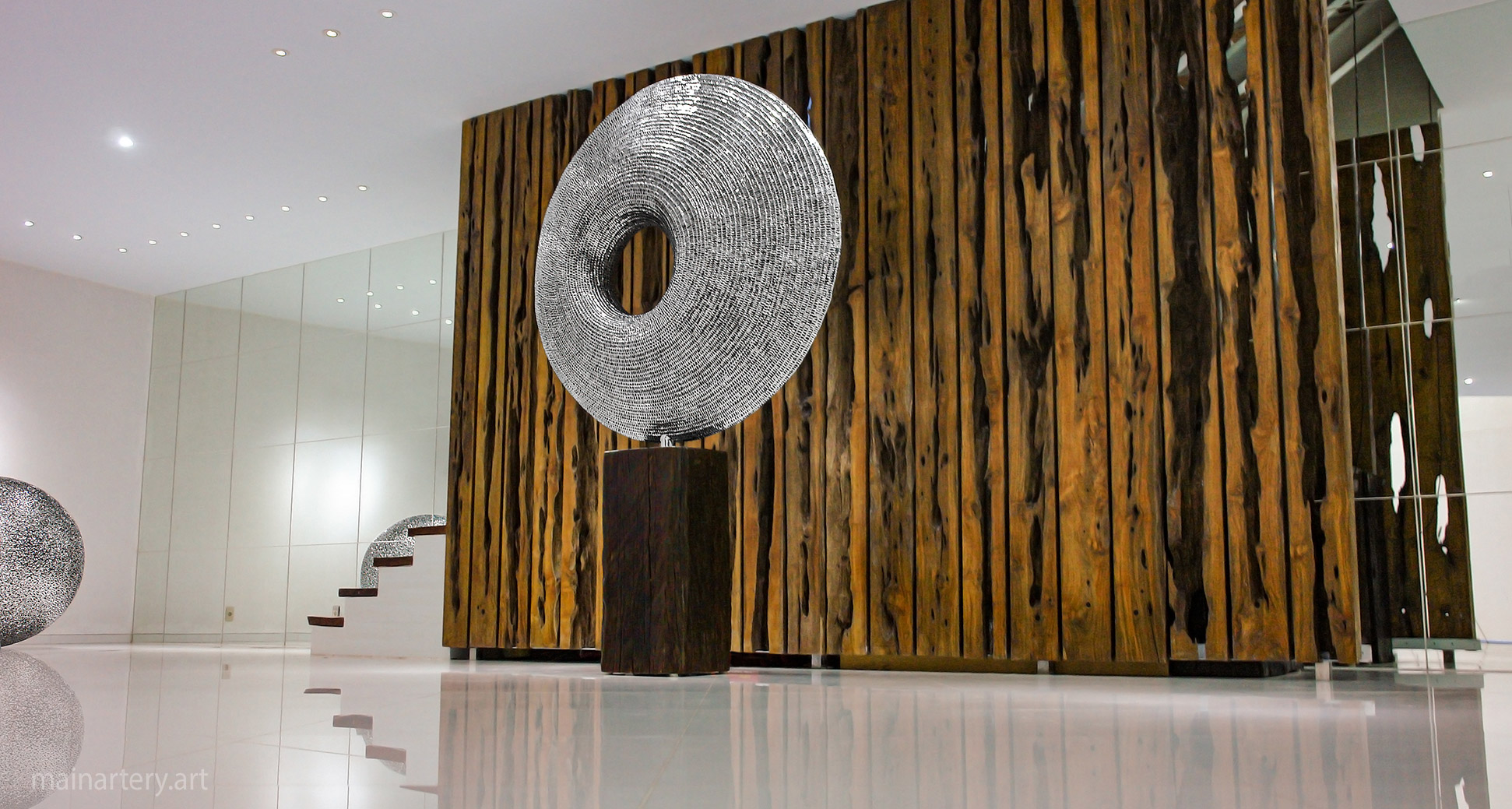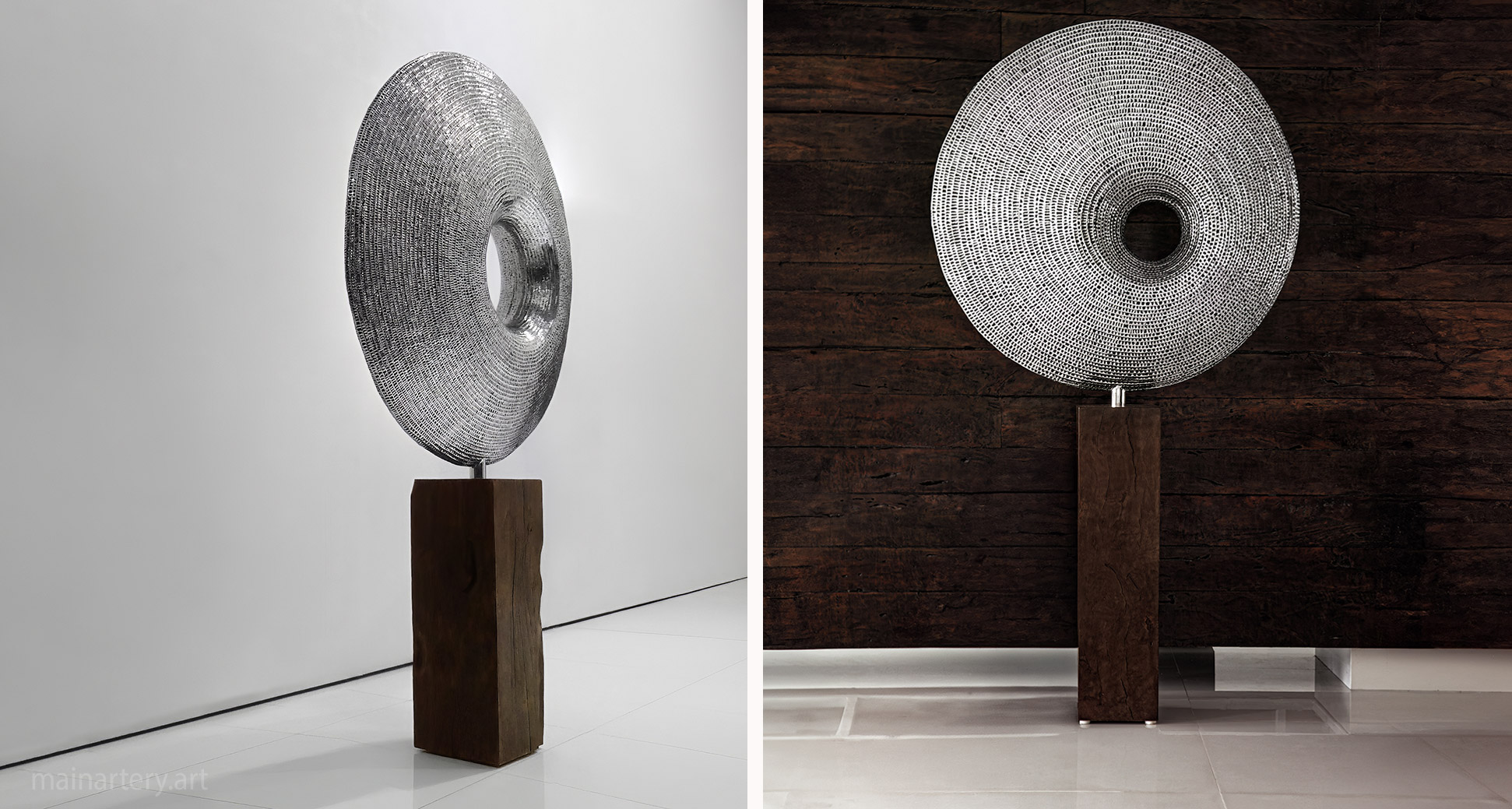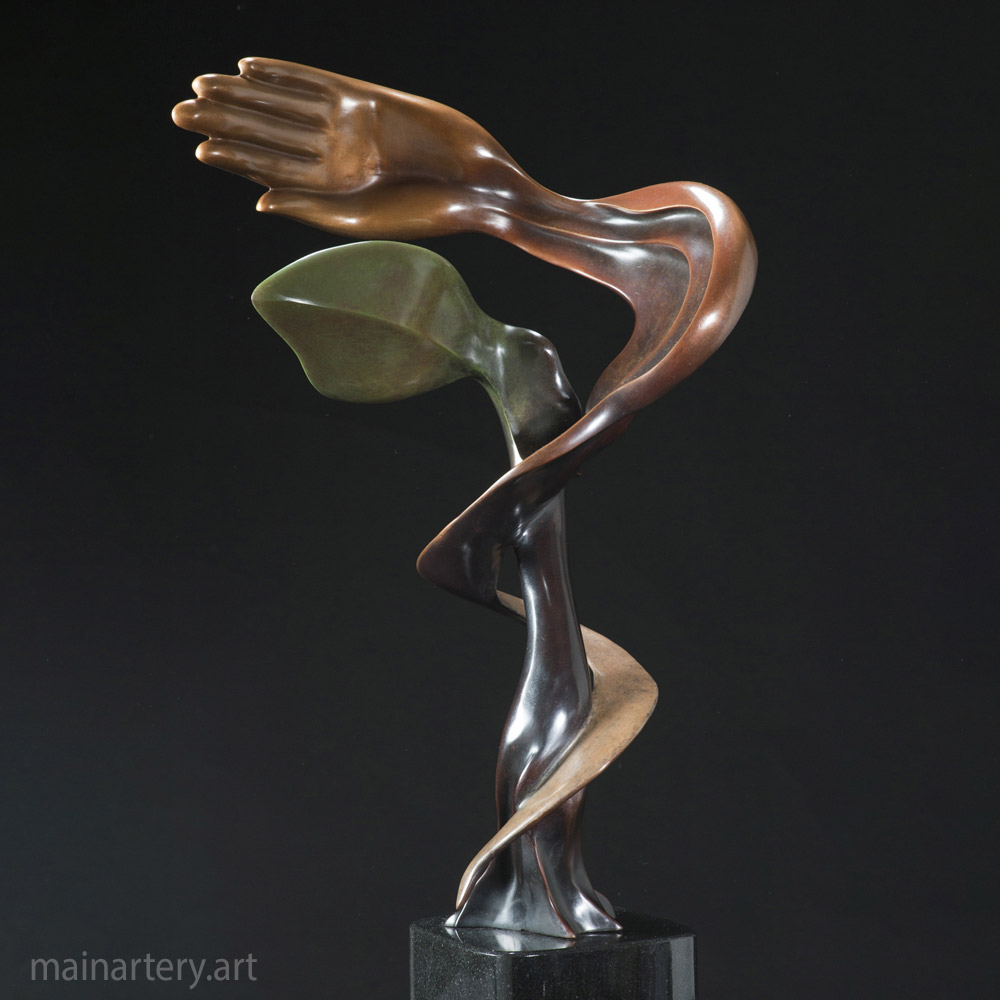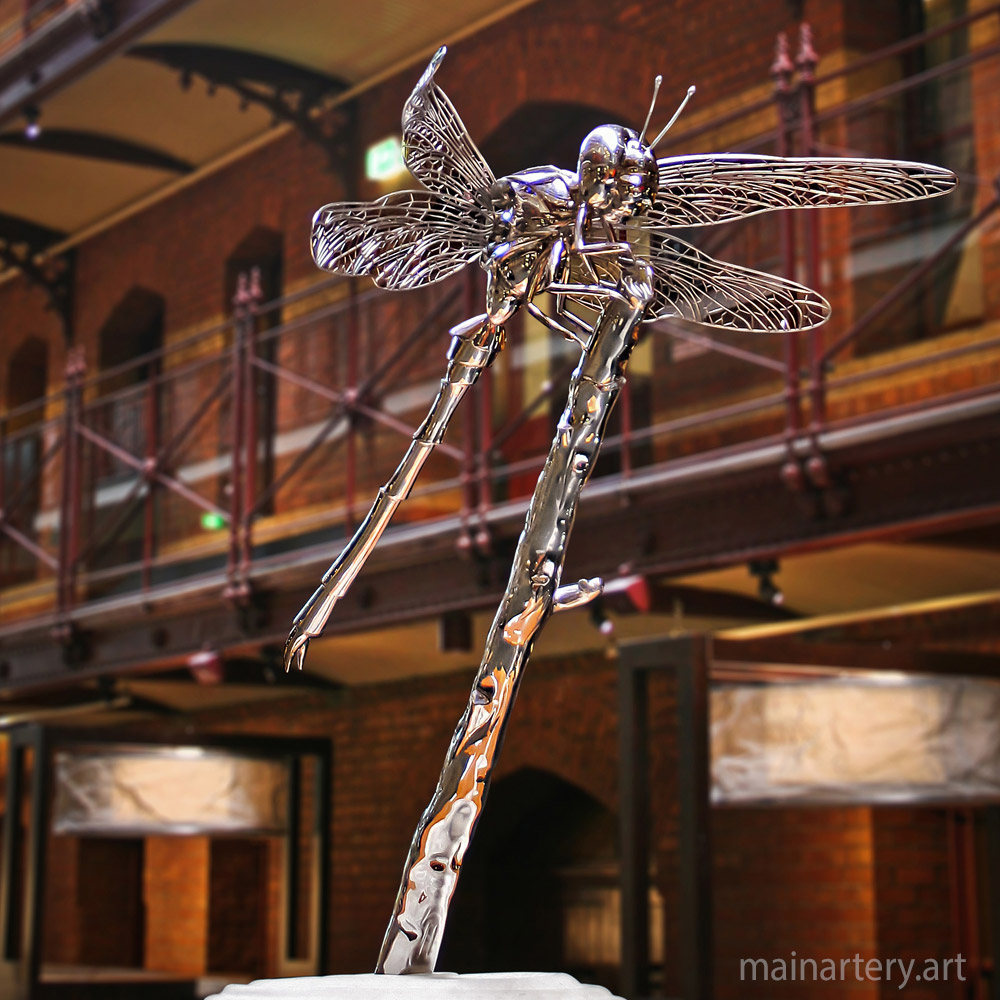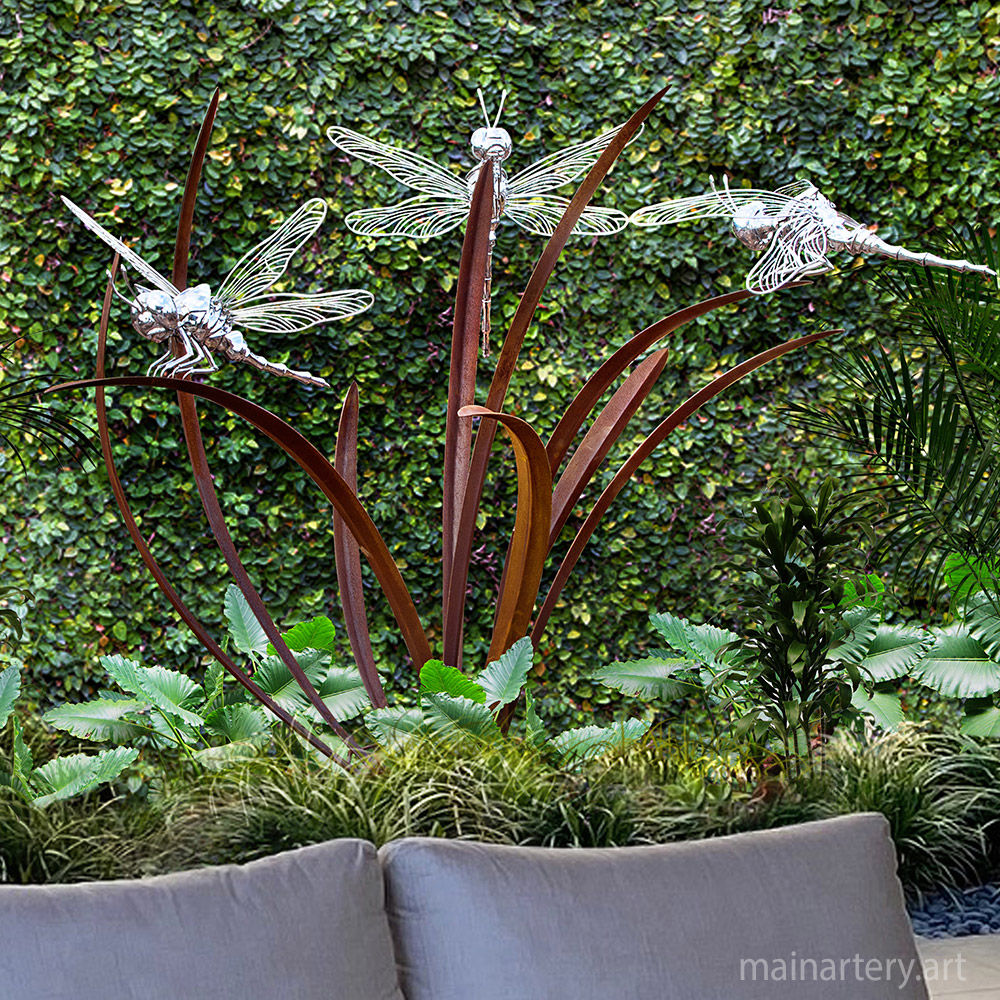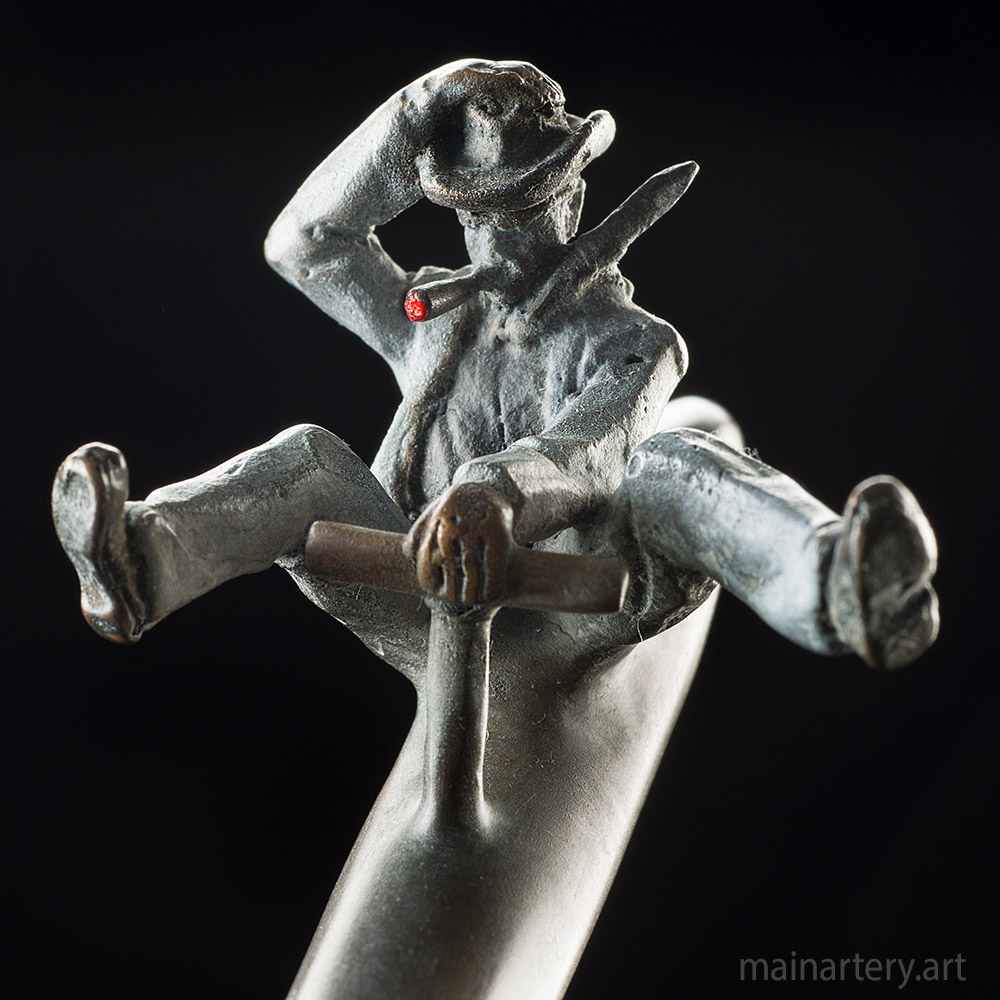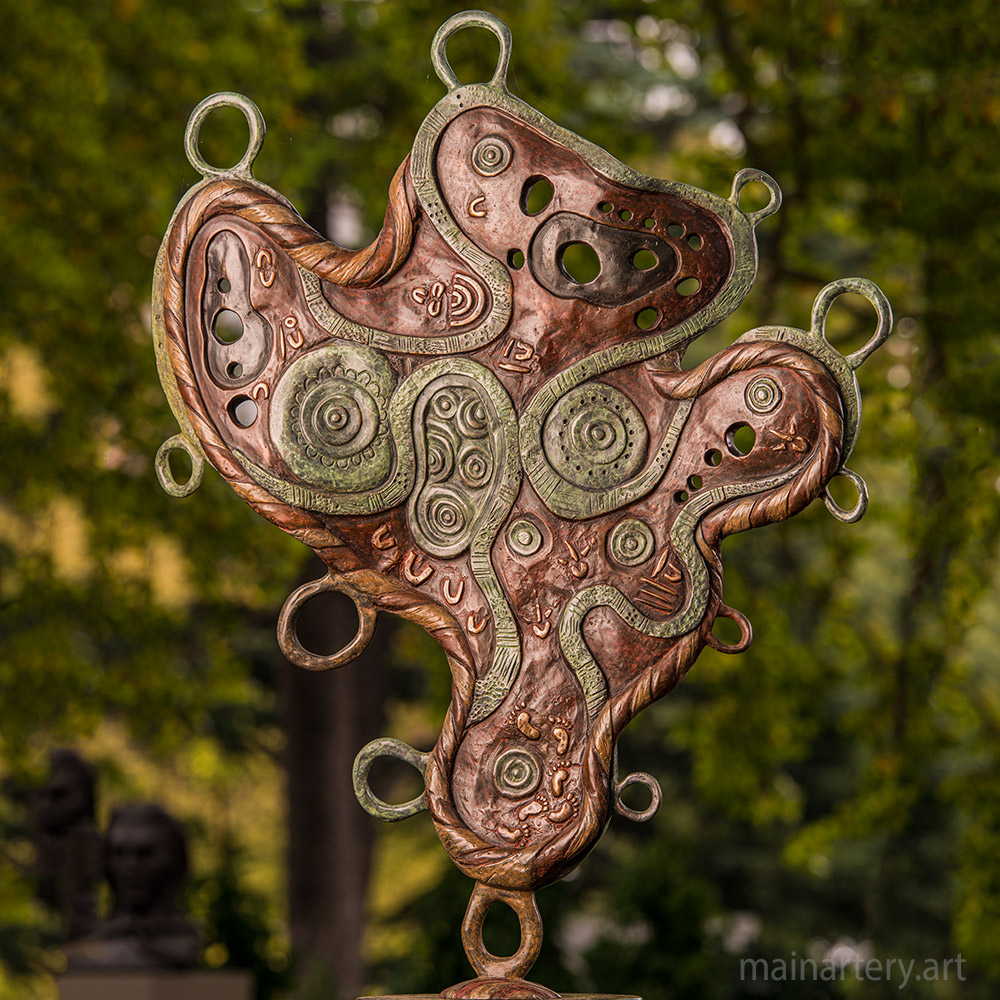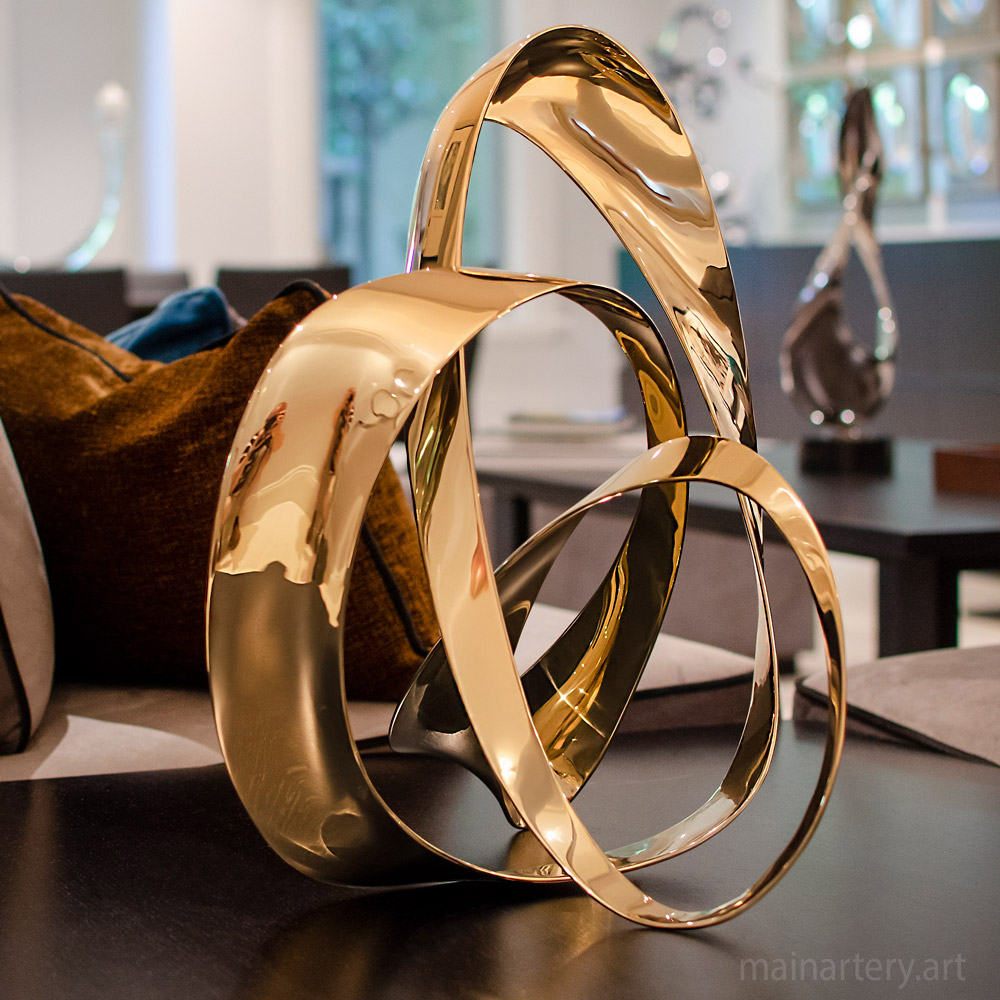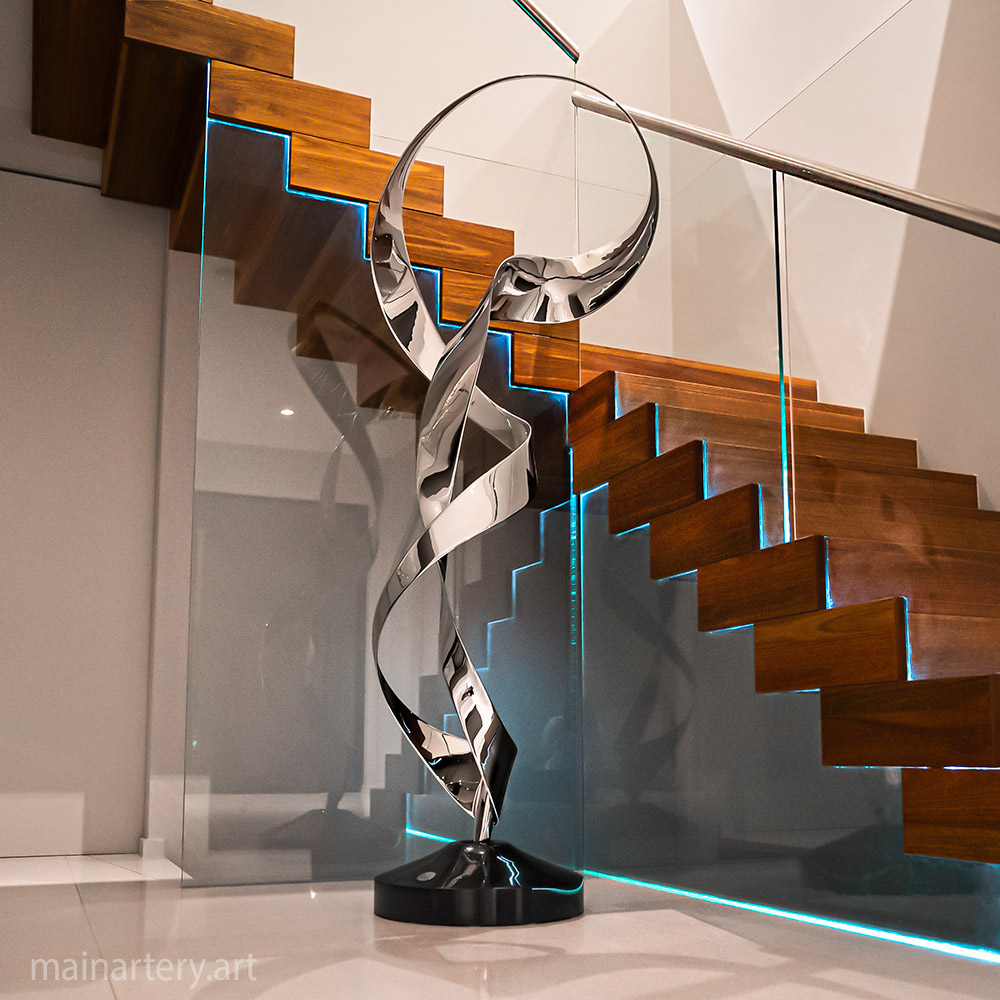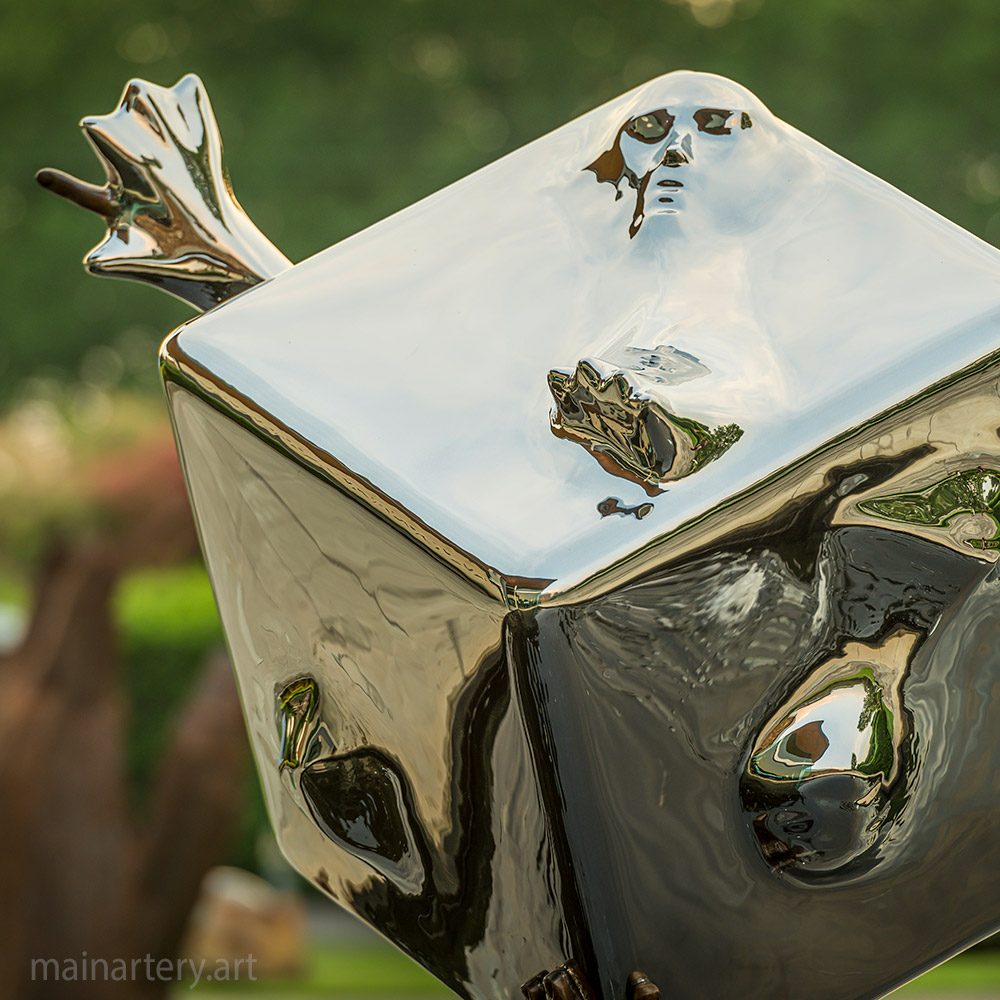Description
‘Neo’ resembles the advanced technology of a prehistoric era, and like the eye of the cyclops, which according to Jung represents a psychic aspect that has not yet split into two and suggests a primordial wholeness and an alternate way of seeing, ‘Neo’ is an imagined device of extraordinary perception that at once collects, concentrates and unifies disparate parts into a coherent whole.
Neo—A Visionary Device of Primordial Wholeness
Evoking the eye of an ancient cyclops and channeling Jungian symbolism, “Neo” stands as a stainless steel circular sculpture bridging primeval energies with futuristic aspiration. Like technology from a prehistoric era, it suggests a singular lens that concentrates perception, gathering scattered elements into one holistic view. The circle itself, smooth and uninterrupted, conjures images of completeness—an unbroken form that resonates with the cyclical nature of life.
A Portal for New Ways of Seeing—From Cyclopean Myth to Modern Insight
The sculpture draws on the cyclops metaphor, a mythical being whose single eye granted a concentrated perspective, unfragmented by dualistic vision. According to Jung, the cyclops symbolizes an unseparated psychic aspect, reflecting a primordial unity that predates our tendency to split experiences into polarities. This neo inspired stainless circular sculpture thus points to an “alternate way of seeing,” an invitation to approach the world without immediate division into good or bad, rational or mystical. Instead, the polished steel circle acts like a reflective portal through which viewers can glimpse a cohesive reality, one where contradictions merge into a singular tapestry.
The All-Seeing Eye—Collecting and Unifying Disparate Parts
“Neo” might be read as an imaginative device that harvests fragments of perception—spatial, emotional, or spiritual—and condenses them into clarity. Each segment of polished metal flows seamlessly into the next, embodying an ideal of integrated knowledge. The piece merges advanced aesthetic minimalism with an echo of archaic forms, leaving viewers to wonder if they’re witnessing an artifact from a lost civilization or a futuristic invention. This duality heightens its aura of mystery. Through reflection, the sculpture reveals surrounding details in distorted yet harmonious fashion, visually reminding us that we see ourselves reflected in every narrative we encounter.
By positioning the circle at eye level, the artist underscores how vantage point affects our understanding. A subtle tilt in the ring might cause the interior to catch the light differently, shifting the entire sculpture’s mood. In that interplay of reflection and refraction, “Neo” invites repeated viewings. Observers may discover new facets each time, paralleling how deeper truths often surface only through sustained introspection.
Ultimately, “Neo” stands as more than an adornment for a contemporary space. Like an ancient lens or cosmic aperture, it challenges the observer to gather scattered experiences into a unified perspective. The piece’s polished surfaces and flowing geometry project an ambiance of calm purpose—an energy urging us to reconcile life’s fragmentary nature. By referencing the cyclops’s single eye, the sculpture gestures toward a state of psychic wholeness, reminding us that multiplicity can exist within an overarching unity. In so doing, this circular sculpture neo form stainless piece redefines how we might approach the world: not as a clutter of disjointed parts, but as a coherent, living mosaic waiting to be seen in full.

